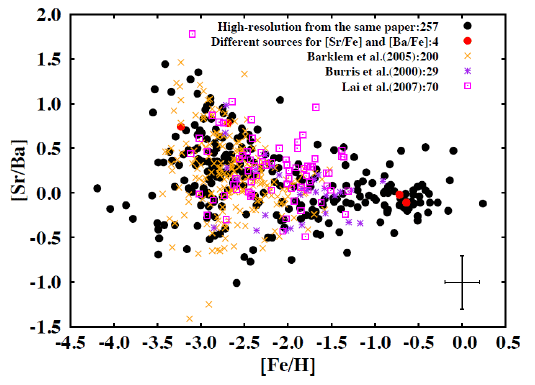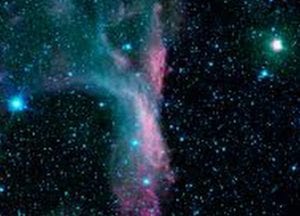Astrophysics: Stellar Nucleosynthesis

Recent efforts in this field have focused on the r-process, which synthesizes half of the nuclides heavier than iron, and must occur on a timescale of seconds in order to create the nuclides heavier than 209Bi. This has traditionally been thought to occur in core-collapse supernovae in the neutrino driven wind that occurs as the nascent neutron star forms.
The chart on the right shows the normalized ratio of the strontium to barium abundance compared to the normalized iron abundance in many stars. Both scales are logarithmic, and [Fe/H]=0.0 is the value in the Sun. The apparent cutoff at [Fe/H] = -3.6 (except for the four stars to the left of that, all of which are thought to be anomalous) suggests that the cutoff is due to collapse to a black hole, and that no nuclides synthesized in such a star get out to the interstellar medium.
Boyd’s Supernovae Collaboration

Image credit: NASA
Although recent theoretical work has suggested that this site has difficulty producing the conditions that are required for the r-process to occur, work by Boyd and his collaborators suggests that core-collapse supernovae should not be ruled out, and may provide a unified explanation of the highly variable atomic abundance data observed in extremely metal poor stars.
See W. Aoki, R.N. Boyd, T. Kajino, T. Suda, and M.A. Famiano, Astrophys. J. Letters 766, L13 (2013).
